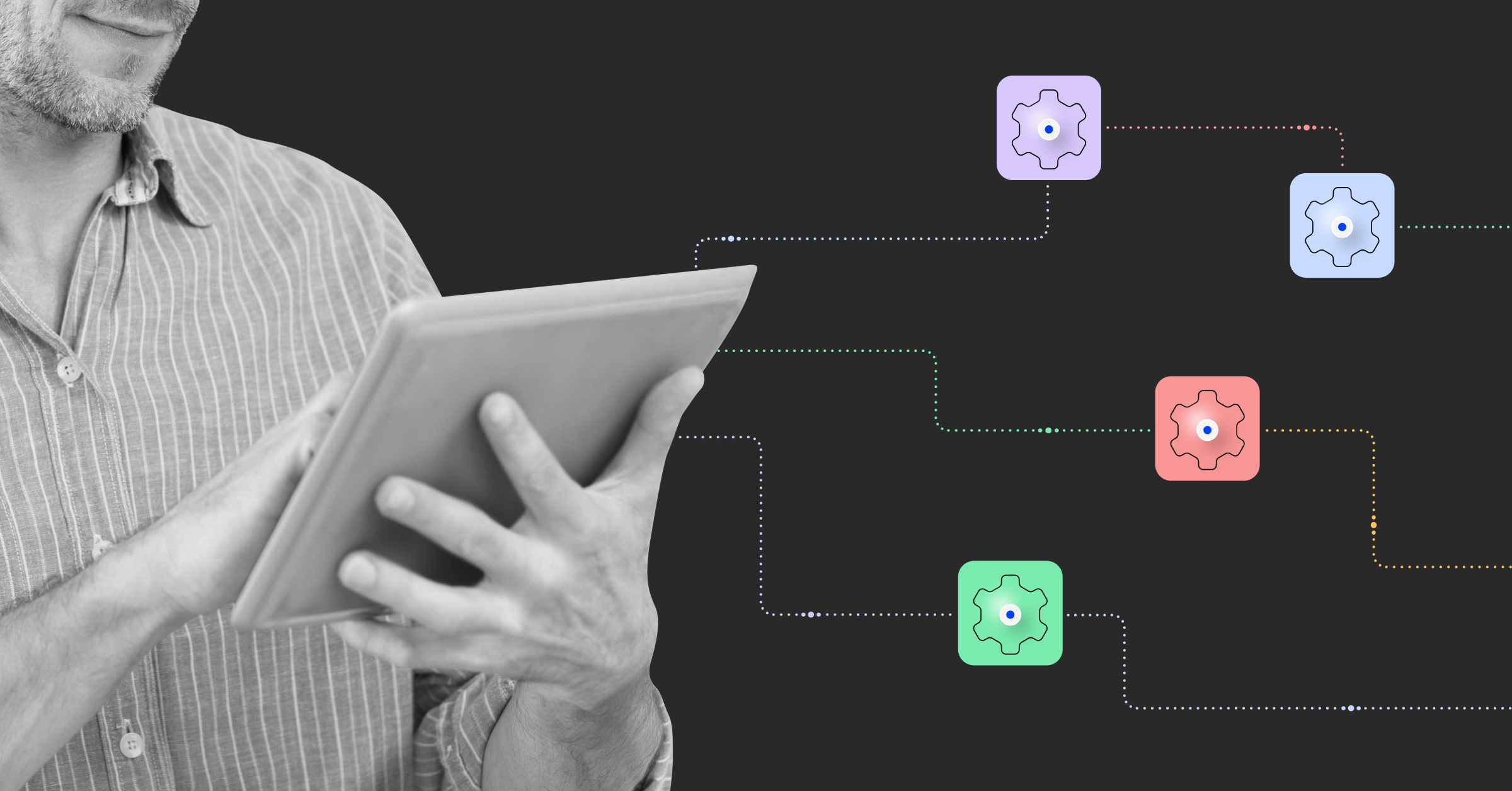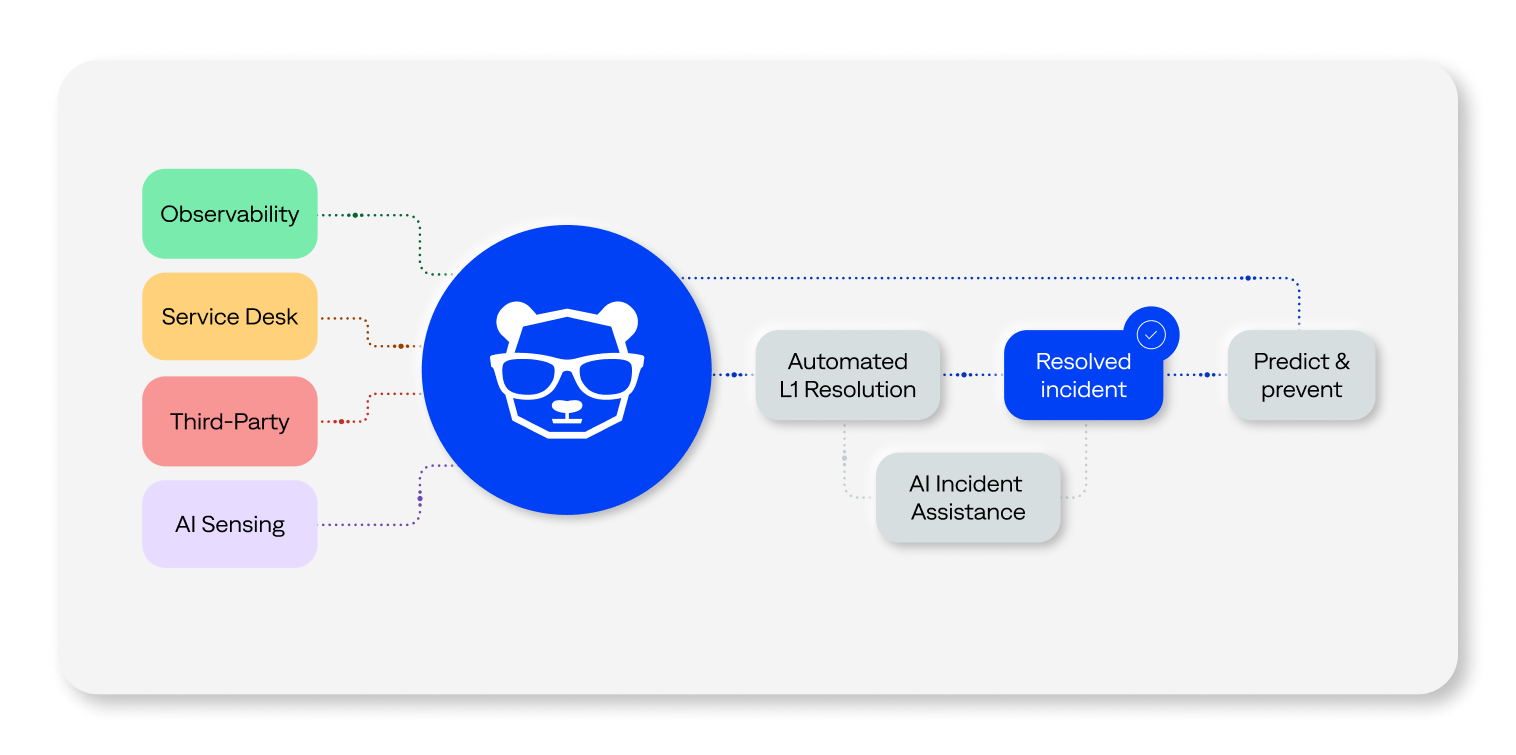Agentic ITOps: The smarter alternative to outsourcing L1 operations

The complexity of modern enterprises has pushed IT operations to the limit. Hybrid cloud environments, CI/CD pipelines, microservices, and agile methodologies revolutionized IT, but caused an explosion of scale and data fragmentation. This complexity simply cannot be managed by legacy tools or manual ITSM processes designed for monolithic systems and static infrastructures.
A primary tactic enterprises have used to meet these challenges is spending vast amounts of resources on or outsourcing Level 1 (L1) operations. But are these investments delivering the expected value of efficiently detecting, triaging, and responding to incidents? For many enterprises, the answer is no.
This is because legacy approaches to L1 operations, including outsourcing, fail to address the overwhelming manual burden of L1 operations in the face of ever-growing scale and complexity. Rather than addressing the root cause of these issues, enterprises throw people at the problem and add more layers of observability tools to try and gain comprehensive visibility into their IT environments. However, more observability means more L1 resources, resulting in rising costs. Simultaneously, the sheer volume of incident tickets, repetitive triage tasks, and reactive firefighting.
In a 2023 EMA survey, 43% of respondents identified prioritization and routing as the phase of incident management that most needs improvement, while 52% named team engagement and collaboration. Escalation bottlenecks and manual, reactive processes strain resources and slow response times. L1 operations frequently require escalations to L2 and L3 resources, overwhelming critical personnel. These factors drain budgets and resources that could otherwise be invested in strategic innovation and contribute to extended response times that make it difficult to meet SLAs.
Enterprise ITOps requires a more agile and intelligent approach that leverages technology and automation, not headcount, to meet these challenges and remain scalable, effective, and sustainable. Agentic IT operations offer a solution by transforming manual and reactive human processes into intelligent, autonomous systems that detect, respond, and prevent IT incidents at machine speed.
“There are $200 billion worth of manual ITOps workflows that are ripe for intelligent automation,” says Assaf Resnick, CEO of BigPanda. “With agentic ITOps, we’re helping enterprises move beyond manual, slow incident management toward intelligent systems that free up talent and reduce operating costs.”
Let’s take a deeper look at why automating L1 operations is essential for the future of enterprise ITOps.
Why ITOps and ITSM are ripe for agentic AI automation
Historically, ITOps relies heavily on manual, resource-intensive processes to function. Advances in agentic AI can transform ITOps and IT service management (ITSM) and bring orders of magnitude improvements in efficiency and capability.
Agentic AI is artificial intelligence that creates autonomous systems that can make decisions and perform tasks without constant human intervention. These systems, also known as AI agents, can adapt to changing environments, learn from experience, and collaborate with humans to detect, respond to, and prevent incidents at machine speed.
L1 Operations are automation sweet spots
IT operations and ITSM are filled with high-volume, manual, and repetitive workflows. Imagine your teams manually sifting through thousands of daily alerts, with most requiring no action or being resolvable through established procedures. This makes these processes ideal candidates for agentic automation.
Alert ingestion, deduplication, and correlation. According to research from Enterprise Management Associates, alerts from mature AI programs are 75% to 100% actionable, which supports proactive incident response and reduces outage frequency.
Incident detection, triage, and routing. Overwhelming alert data, lack of context, and correlation hinder the ability to detect and triage issues effectively, contributing to increased downtime, escalated L2/L3 incidents, and missed SLAs.
Status updates and simple remediations. Sending updates to stakeholders and executing predefined remediations for known issues.
The benefits of automating L1 operations with agentic AI
Automating L1 operations improves operational efficiency and service quality while saving costs. IT teams can better align with customer expectations and evolving business needs without increasing operational costs by offloading routine, high-volume tasks to intelligent automation platforms.
Accurate incident detection automation enables faster and more accurate response. However, fragmented and siloed data and rigid manual processes are major obstacles to efficient IT incident management.
Incident detection and prioritization often occur in a vacuum, with L1 responders lacking consolidated insights into the affected applications, services, or customer experiences.
Without the full context surrounding incidents, L1 teams are left to treat all of them with equal urgency or rely on institutional knowledge to guess how to prioritize them. However, limited L1 experience and IT blind spots make triage slow and error-prone.
L1 teams waste effort on low-priority issues while high-impact problems go unnoticed, resulting in missed SLAs and incorrect categorization, prioritization, and assignment of incidents.
Agentic AI solves these problems by creating autonomous systems that can automatically detect potential issues, rapidly diagnose them, assess impact, prioritize accordingly, and trigger automated fixes or suggest next steps. These systems, also known as AI agents, can adapt to changing environments, learn from experience, and collaborate with humans to detect, respond to, and prevent incidents at machine speed. These AI agents can do more than analyze data. They can act autonomously, semi-autonomously, or with humans-in-the-loop to resolve issues, optimize performance, and predict and prevent IT incidents.
Agentic ITOps reduces the volume of escalations and disruptive bridge calls, often triggered by delayed or incorrect triage at the L1 stage. With AI-powered alert correlation, enrichment, and intelligent routing, the system resolves incidents faster and with fewer handoffs. This frees up valuable time and resources for senior engineers and minimizes business disruptions. By automating L1 detection and response workflows, enterprises can reduce operational costs while simultaneously improving MTTR.
Automating L1 operations allows enterprises to ensure higher service levels, meet demanding business SLAs, and contain operational costs. It’s a scalable, sustainable alternative to legacy outsourcing and manual processes that empowers teams to be more productive while improving system performance and user satisfaction.
How BigPanda helps automate L1 operations
The BigPanda agentic IT operations platform offers AI-powered capabilities that help enterprises automate the manual and time-intensive L1 workflows of ITOps and incident management.
“Agentic IT operations is a complete reimagining of the L1 function,” said Fred Koopmans, Chief Product Officer at BigPanda. “Our AI doesn’t just detect, it understands. It acts, and most importantly, it learns from every incident to improve over time.”
BigPanda uses purpose-built agentic AI to help ITOps and incident management teams detect incidents faster, automate triage and diagnosis, and augment responder expertise to reduce resolution times. Our platform eliminates the inefficiencies of L1 operations, freeing IT teams from repetitive, low-value work so they can focus on strategic initiatives.
“Organizations that have put in automation are very pleased with the outcomes,” said
Jon Brown, senior analyst at Enterprise Strategy Group. “Those using AI in production, many of whom are BigPanda customers, are thrilled with the results.”
BigPanda AI Detection and Response transforms reactive and manual workflows into intelligent, automated processes. Powered by agentic AI, it automates the manual detection and response work of L1 operations teams.
AI Detection and Response delivers advanced observability, correlation, and automation capabilities to streamline and accelerate the manual and disjointed processes of detecting, diagnosing, triaging, and resolving incidents.
AI Detection and Response offers capabilities that include:
Service desk observability: Bridge the gap between the network operations center (NOC) and service desk by automatically identifying and correlating related issues across both teams. Give your teams unified visibility to eliminate duplicative efforts, accelerate response times, and reduce escalations.
External observability: Expand your detection capabilities with real-time visibility into external dependencies, services, and real-world events such as power or internet outages and social media signals. Correlate this data to surface hidden issues and help your teams avoid slow, manual investigations.
Incident correlation: Cluster and correlate disparate incidents by uncovering hidden relationships that topology-based methods often miss. AI Detection and Response correlates topology maps, configuration management database (CMDB), knowledge base articles, and runbooks with other operational and informal knowledge sources. AI-powered analysis of this data reveals patterns of multiple incidents related to the same root cause or upstream issue. This correlation and analysis gives responders situational awareness of the broader business impact of incidents to prioritize response and take decisive actions.
Agentic runbook automation: BigPanda uses an AI-powered response agent to execute runbooks automatically based on detected alerts and incidents. This agent learns from historical incidents, diagnostic data, and institutional knowledge in real time and delivers precise suggestions for priority, category, and assignment. These automated actions include clear reasoning on ‘why,’ so L1 responders can validate decisions and act confidently.
Reclaim the value hidden in your organization’s tacit data
When enterprises outsource L1 support, they give away ownership of a goldmine of operational data that could otherwise be harnessed to power insights and innovation. Outsourced teams operate reactively and in silos, using their own tools, workflows, and documentation. As a result, your organization loses access to valuable data generated by handling alerts, tickets, and incident resolutions. This data includes standard operating procedures (SOPs), remediation logs, root cause analyses, and chat logs.
This rich, tacit data holds the keys to transforming ITOps and ITSM. When enterprises outsource L1 operations, they lose access to crucial data and feedback loops needed to drive continuous improvement. With agentic operations, this unstructured data becomes a vital, valuable strategic asset. Agentic AI doesn’t require highly structured data inputs to function, and can leverage your organization’s messy, scattered data and transform it into adaptive intelligence.
“GenAI can ingest and index all the valuable, unstructured data from your organization and convert it into data that can be leveraged to improve your operations,” said Jason Walker, Chief Innovation Officer at BigPanda. “Now you can take in information from all sources and convert it into usable data that an AI assistant can incorporate into its assistance with day-to-day operations.”
Agentic AI is the future of ITOps
Outsourced, manual L1 support is expensive, inefficient, and fails to scale. BigPanda offers a compelling alternative: agentic IT operations that use intelligent automation to handle L1 workloads faster, cheaper, and more effectively.
The BigPanda agentic IT operations platform helps enterprises significantly reduce operational costs by targeting:
- High personnel costs that are driven by manual L1/L2 workloads and preventable escalations.
- Disruption of strategic resources results from pulling valuable engineers into triage instead of innovation.
Agentic ITOps represent a new paradigm, where technology works alongside humans, not in place of them. It’s a model designed for the speed, complexity, and demands of modern enterprise IT. To learn more, attend our upcoming webinar series that explains how agentic AI can transform reactive IT operations into intelligent, autonomous systems.






